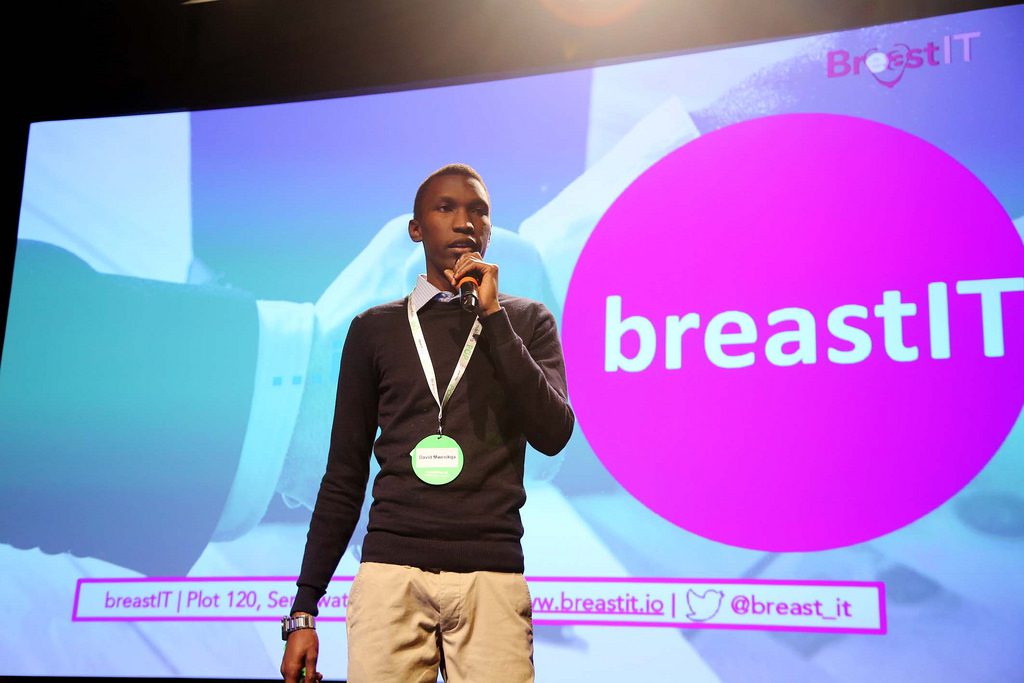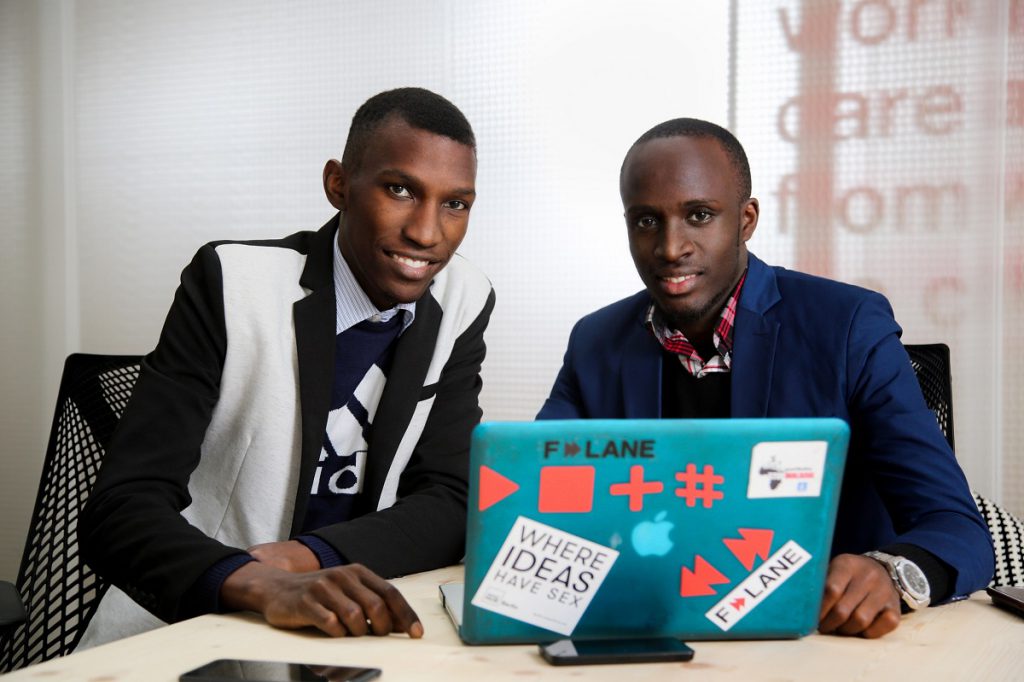Breastit: The Young Creators of A magical glove that detects cancer
Breast cancer is the most common type of cancer and the fifth biggest cause of death in women globally. We spoke to BreastIT, the Uganda-based startup developing a glove that facilitates early detection and diagnosis.
By Rute Costa
According to the World Cancer Research Fund International, 1.7 women were diagnosed with breast cancer worldwide in 2012 alone. It is the most common type of cancer and the fifth biggest cause of death in women globally. Men, although much less likely to develop breast cancer, can also be affected by the illness. BreastIT is developing a practical solution to reduce these numbers.

A personal story
Moris Atwine, founder of BreastIT, saw breast cancer have an impact on his family in the most unexpected way: through a male relative. When I ask Moris how the idea for BreastIT first came about, he mentions the loss of his grandfather as the main reason: “If you look at the risk factors for getting breast cancer, family history is key, and the only way we can beat it is through early diagnosis. This was always in my mind because I’m at a huge risk of getting breast cancer. I was looking at how I could stop the spread of breast cancer within our family”.
With this personal drive propelling him forward, Moris, still a young computer scientist at university, partnered up with two equally proactive students to develop BreastIT, an alternative breast cancer diagnostic tool. The core team that got together in Uganda in 2014 remains the same: Atwine as the team leader and developer, Kabwama as the hardware engineer and Mwesigwa as the research and development lead.
“If you look at the risk factors for getting breast cancer, family history is key, and the only way we can beat it is through early diagnosis.”

The magical glove
After much research and development, they arrived at the prototype they work with now: a portable glove equipped with piezoelectric crystals on the palm of the hand, which produce ultrasound to screen for cancerous cells. Moris explains further: “We use the principles of both ultrasound and machine learning. Sound waves reach the inner parts of the breast, bouncing off the breast tissue, with various parts of the tissue reflecting the waves differently. The reflected waves are then used to generate images. All these images are sent to a software that uses machine learning and compares the images it has collected with what it already has in the database, and then gives a full analysis”.
The glove is an attractive alternative to current breast-cancer screening methods: it avoids the side-effects of X-rays in the mammography, and the claustrophobic, expensive and time-consuming experience of Magnetic Resonance Imaging (MRI). It is also suitable for diagnosis in both male and female patients, and has the potential of being more accessible – both geographically and financially. “Remember for a country like Uganda, radiology is still very limited. We only have one mammogram in the national hospital in our country, and it has been down now for a good few months”, Moris says. The team are developing a business plan that commits to making the glove affordable (through bulk purchases and payment instalments), and they are trying to ensure it will reach remote areas where diagnosis rarely happens early enough to save lives.
Exciting prospects
At the moment, BreastIT are focused on improving the accuracy of diagnosis of their tool, looking to reach 95% specificity. In order to develop the algorithm and increase its precision, they are planning clinical tests by partnering up with hospitals. Once the product gets approved, BreastIT are aiming at market expansion in Uganda and beyond: in certain countries in Africa to tackle the lack of accessibility to diagnostic tools, and Europe, because it is the continent with the highest number of breast cancer cases. Even though in most European countries women have access to regular screenings, Moris points out that this only applies to a certain demographic (women over 35), and is not frequent enough. The Breast IT tool would offer a simpler, faster and more affordable diagnosis, and consequently save more lives.

Top tips from the BreastIT team
“I think the only thing more powerful than any big idea, is the team that can see it through”, says Moris. The founder spots two essentials that, to him, make a successful team: commitment and skill-sets. “We are still pursuing [BreastIT] because of the commitment of the team members, particularly in the economical context of Uganda that requires a lot of bootstrapping”. Despite exams and academic stress, the young entrepreneurs have been able to set milestones and meet them.
“Secondly, it’s all about the skill sets”, Moris adds. He pinpoints the importance of making up for the inexperience of a young team by surrounding themselves with more seasoned professionals and entrepreneurs. The knowledge they source from their medical advisors at the University of Cambridge (UK) and Rutgers University (US) is invaluable: “they have heavily helped us in achieving this dream”. Listening and learning from others’ experiences has been key to BreastIT’s sustainable growth, and Moris advices every young entrepreneur to walk down the same path.
I ask Moris what final pieces of advice he would like to pass on to other young entrepreneurs. After a moment of silent pondering he says: “I still think that there is nothing worthwhile that comes easy. You have to give it your time, you have to give it a lot of patience.[…] And, of course, do what you love. Some people tend to go for something they don’t love because they want to make sure their pockets are happy. But I feel that in this life, when you’ve changed a couple of people’s lives, change people’s mindsets, then that’s impactful.”
BreastIT want other young startups to look to them and “feel like they can also give their project a shot”. Moris is equal amounts hopeful and grounded, a dreamer with a plan. He and the rest of the Breast IT team are more than ready “to see it through”.
